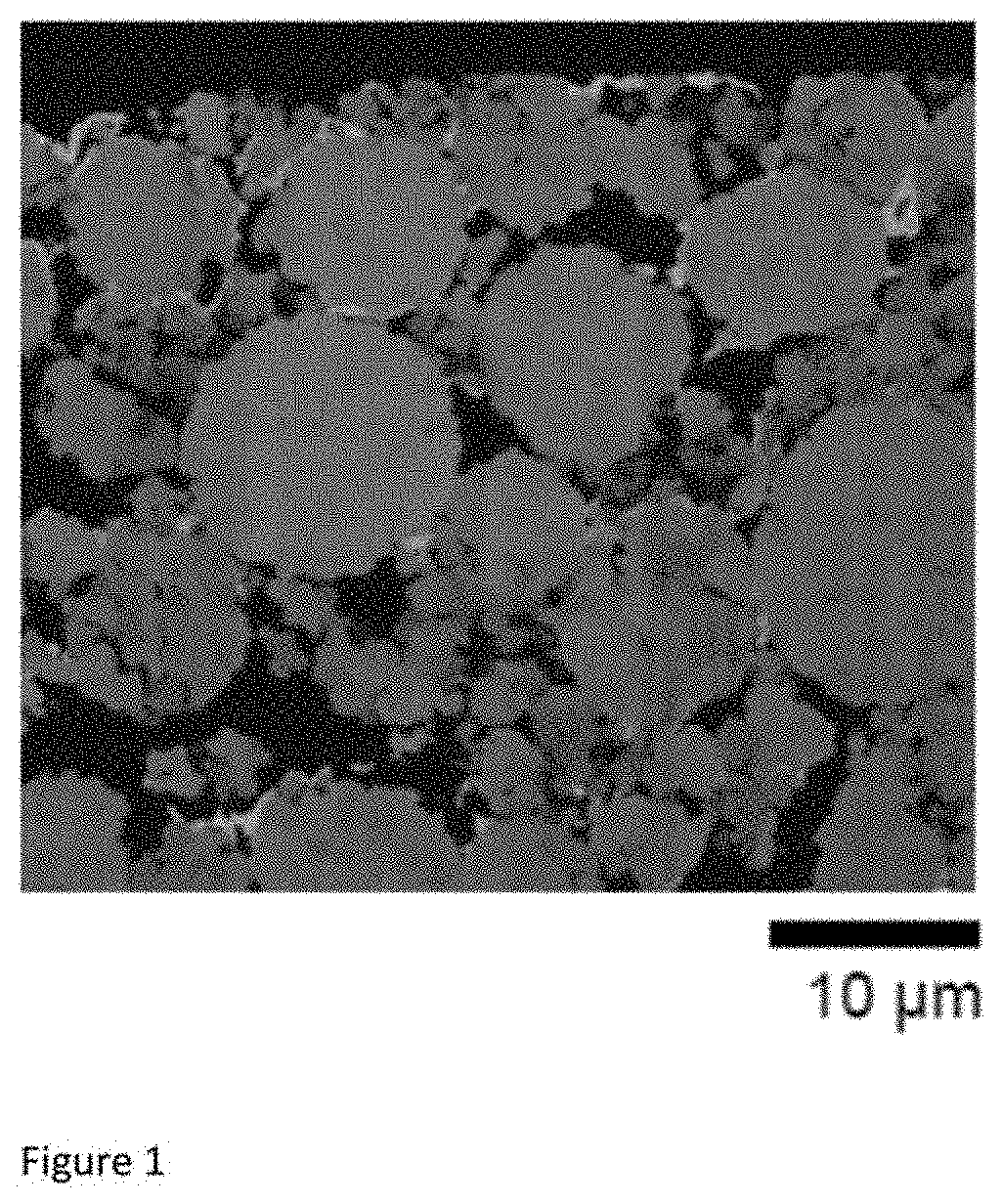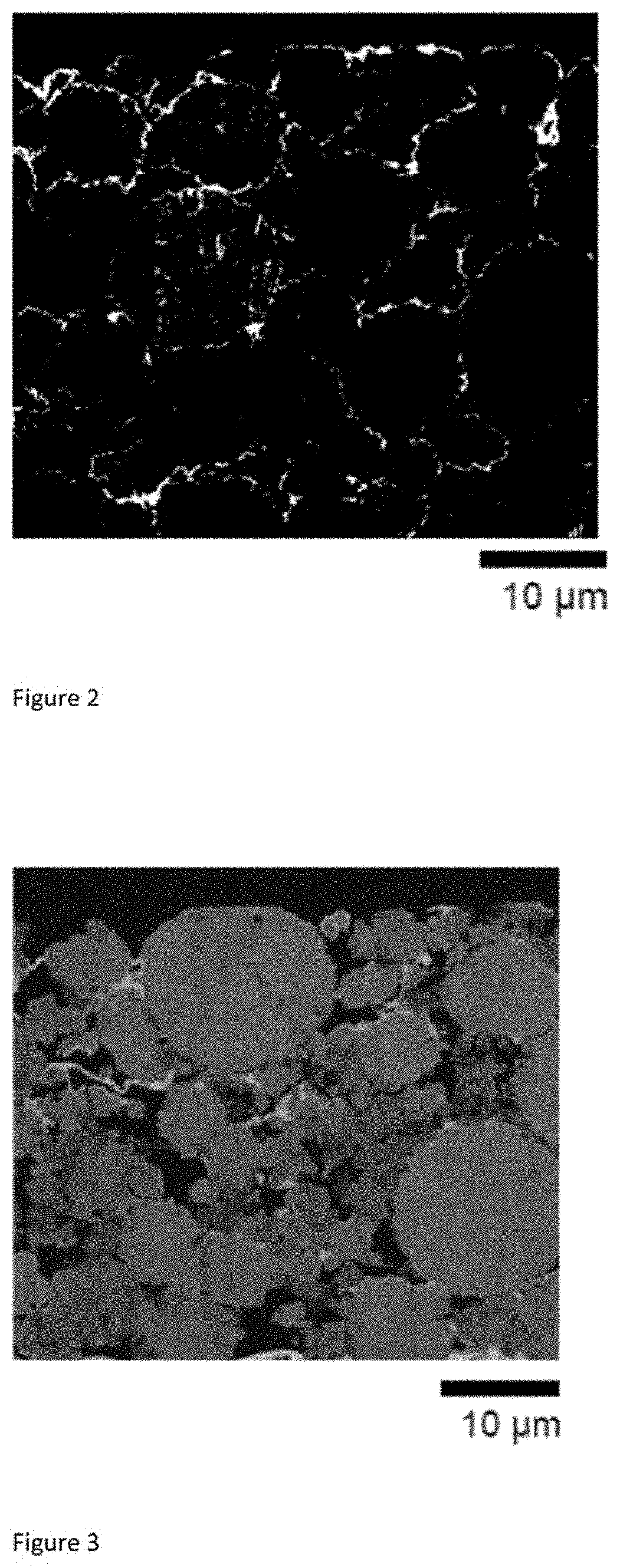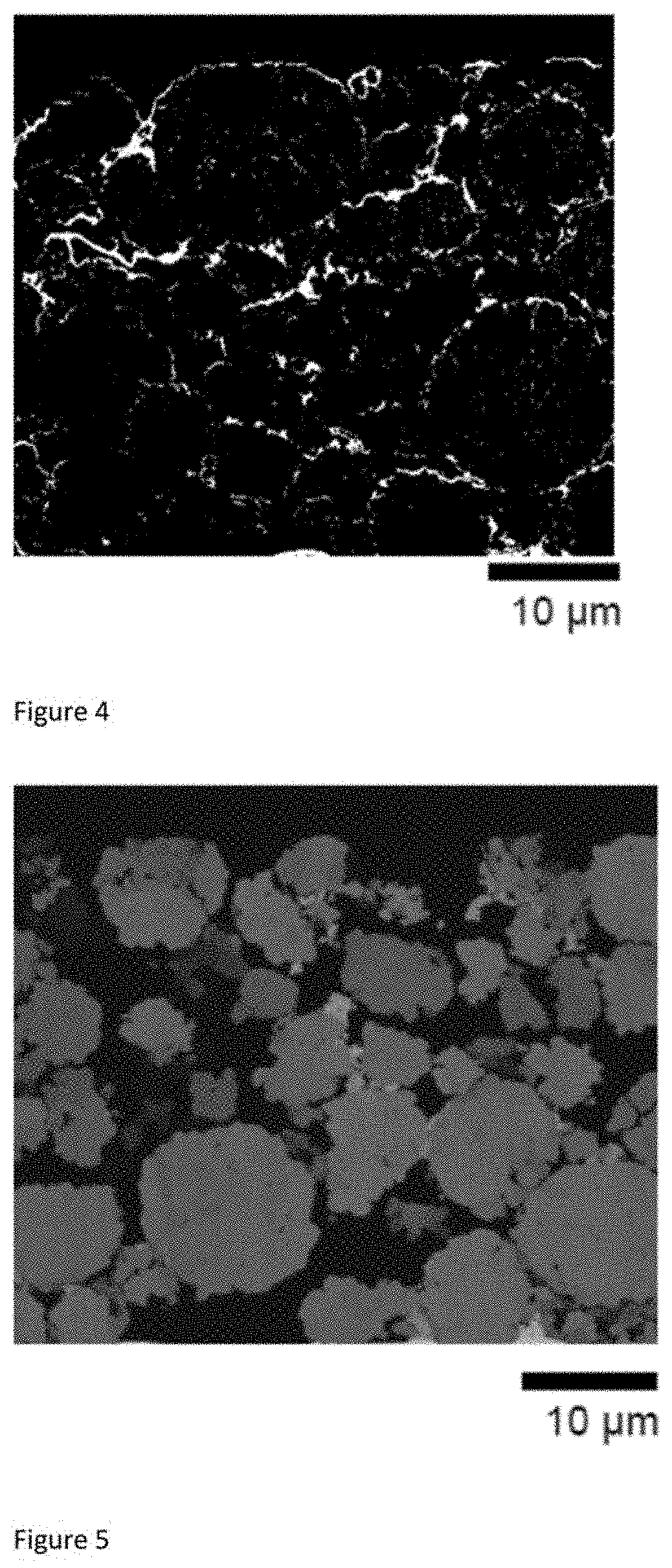Electrode for secondary battery and secondary battery
- Summary
- Abstract
- Description
- Claims
- Application Information
AI Technical Summary
Benefits of technology
Problems solved by technology
Method used
Image
Examples
examples
Measurement Example 1: Method for Measuring Shape of Conductive Material Portion
[0163]The voids of the electrodes obtained in Examples and Comparative Examples were filled with an epoxy resin. After that, the electrode cross section was cut out using an ion milling apparatus (IM4000 manufactured by Hitachi High-Tech Corporation). The spreading resistance value in the electrode cross section was measured by scanning spreading resistance microscopy. After that, the total data number of spreading resistance values N (1024 columns×918 rows in the case of Example 1) attained by removing the current collecting foil data from the acquired spreading resistance value data of 1024 columns×1024 rows were sorted in ascending order using Excel, and then the 0.1Nth spreading resistance value (rounded down to the nearest decimal point) was taken as R. Binarization processing was performed on all the two-dimensional data using 0.7R as a threshold value. A pixel value indicating a resistance value o...
example 2
Measurement Battery Performance Evaluation
[0166]With regard to the rate characteristics and cycle characteristics, a working electrode was fabricated by punching the electrode plate fabricated in each of Examples and Comparative Examples using a punch of φ16.1 mm. As a counter electrode, 98 parts by weight of graphite (manufactured by Ito Graphite Co., Ltd., Model Number SG-BH8, particle size 8 μm), 1 part by weight of 1% aqueous solution of sodium carboxymethyl cellulose (manufactured by Daicel Miraizu Ltd., Model Number #2200) in terms of solid content, 1 part by weight of 1% aqueous dispersion of SBR (manufactured by JSR Corporation, Model Number TRD2001) in terms of solid content, and ion-exchanged water were added so that the solid concentration in the entire electrode paste was 50%, and mixing was performed at a rotational speed of 30 RPM for 30 minutes using a planetary mixer to obtain an electrode paste. This electrode paste was applied to a copper foil (thickness: 10 μm) s...
synthesis example 1
[0167]Natural graphite powder of 1500 mesh (Shanghai Yifan Graphite Co., Ltd.) was used as a raw material, 220 ml of 98% concentrated sulfuric acid, 5 g of sodium nitrate, and 30 g of potassium permanganate were added to 10 g of natural graphite powder in an ice bath, mechanical stirring was performed for 1 hour, and the temperature of the liquid mixture was maintained at 20° C. or less. This liquid mixture was taken out from the ice bath and stirred and reacted in a water bath at 35° C. for 4 hours, and then the suspension obtained by adding 500 ml of ion-exchanged water to the liquid mixture was reacted at 90° C. for another 15 minutes. Finally, 600 ml of ion-exchanged water and 50 ml of hydrogen peroxide were added to the resultant suspension, and the reaction was performed for 5 minutes to obtain a graphene oxide dispersion. This was filtered while it was hot, the metal ions were washed with a dilute hydrochloric acid solution, the acid was washed with ion-ex...
PUM
 Login to View More
Login to View More Abstract
Description
Claims
Application Information
 Login to View More
Login to View More - R&D
- Intellectual Property
- Life Sciences
- Materials
- Tech Scout
- Unparalleled Data Quality
- Higher Quality Content
- 60% Fewer Hallucinations
Browse by: Latest US Patents, China's latest patents, Technical Efficacy Thesaurus, Application Domain, Technology Topic, Popular Technical Reports.
© 2025 PatSnap. All rights reserved.Legal|Privacy policy|Modern Slavery Act Transparency Statement|Sitemap|About US| Contact US: help@patsnap.com



